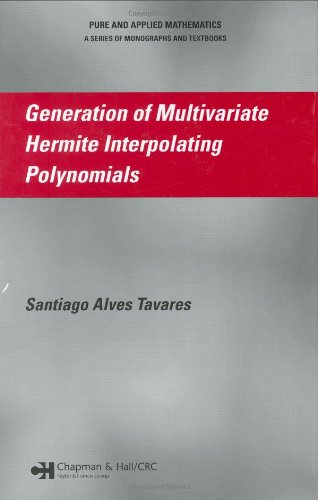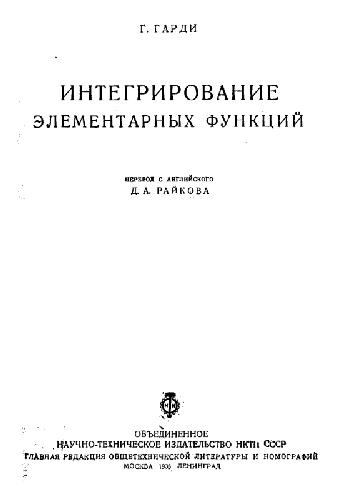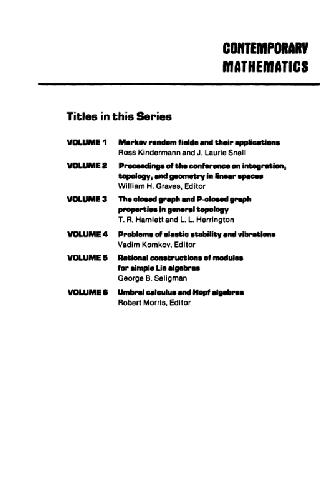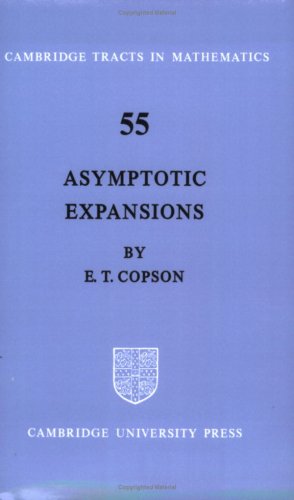Santiago Alves Tavares1584885726, 9781584885726, 9781420034851
Table of contents :
Generation of Multivariate Hermite Interpolating Polynomials……Page 3
How the book evolved……Page 6
What the book contains……Page 9
Acknowledgments……Page 11
Notation……Page 12
Contents……Page 13
References……Page 674
Part I: Constrained Numbers……Page 27
1.1 Definition……Page 28
1.1.1 Operations with constrained numbers……Page 37
1.1.2 Operations with sets of constrained numbers……Page 39
1.2.1 Contravariant coordinate representation……Page 44
1.2.2 Covariant coordinate representation (dual system)……Page 45
1.3.2 Oblique representation of the coordinate axes……Page 47
1.4.1 One-dimensional constrained numbers……Page 48
1.4.2 Two-dimensional constrained numbers……Page 49
1.5 Two-dimensional representation of n-dimensional coordinate axes……Page 50
1.6.1 Definitions……Page 51
1.6.2 Geometric representation of the zero-dimensional constrained numbers……Page 52
2.1.1 One-dimensional constrained numbers……Page 55
2.1.2 Two-dimensional constrained numbers……Page 56
2.2.1 Rules for the generation……Page 57
2.2.2 Rules for the particular cases……Page 60
2.2.3 Algorithm for the generation of the elements……Page 61
2.3.1 Algorithm for the generation of the elements……Page 62
2.4.1 Rules for the generation……Page 64
2.4.3 Algorithm for the generation of the elements of the set………Page 67
2.4.4 Algorithm for the generation of the elements of the set………Page 69
2.5 Generation of the elements of the set………Page 70
2.5.1 Algorithm for the generation of the elements of the set………Page 71
2.5.2 Algorithm for the generation of the elements of the set………Page 72
2.6.1 Generation of the elements……Page 73
2.6.3 Elements of the set………Page 74
2.6.4 Elements of the set………Page 75
2.6.6 Geometric representation of the set………Page 76
2.7.1.1 Algorithm for the generation of the elements of the set………Page 77
2.7.1.4 Algorithm for the generation of the elements of the set………Page 78
2.7.2.1 Underlying set………Page 79
2.7.3.1 Elements of the sets………Page 80
2.7.3.2 Elements of the sets………Page 81
2.7.3.3 Elements of the sets L1(1) for the underlying set………Page 82
2.7.3.4 Elements of the sets L1(1) for the underlying set………Page 83
2.7.4.1 Elements of the sets………Page 84
2.7.4.2 Elements of the sets………Page 85
2.7.4.3 Elements of the sets L1(2) for the underlying set………Page 86
2.7.4.4 Elements of the sets L1(2) underlying set………Page 88
2.7.5.1 Elements of the sets………Page 89
2.7.5.2 Elements of the sets………Page 90
2.7.5.3 Elements of the sets L1(3) for the underlying set………Page 91
2.7.5.4 Elements of the sets L1(3) underlying set………Page 92
2.8.1.2 Algorithm for the generation of the elements of the set………Page 94
2.8.1.4 Algorithm for the generation of the elements of the set………Page 95
2.8.2.1 Underlying set………Page 96
2.8.3.1 Elements of the sets………Page 97
2.8.3.2 Elements of the sets………Page 98
2.8.3.3 Elements of the sets L2(1) for the underlying set………Page 99
2.8.3.4 Elements of the sets L2(1) for the underlying set………Page 100
2.8.4.1 Elements of the sets………Page 101
2.8.4.2 Elements of the sets………Page 103
2.8.4.3 Elements of the sets L2(2) for the underlying set………Page 105
2.8.4.4 Elements of the sets L2(2) for the underlying set………Page 108
2.8.5.1 Elements of the sets………Page 109
2.8.5.2 Elements of the sets………Page 111
2.8.5.4 Elements of the sets L2(3) for the underlying set………Page 113
2.9 Examples of three-dimensional constrained space……Page 115
2.9.1.2 Algorithm for the generation of the elements of the set………Page 116
2.9.1.3 Algorithm for the generation of the elements of the set………Page 117
2.9.1.4 Algorithm for the generation of the elements of the set………Page 118
2.9.3.1 Elements of the sets………Page 119
2.9.3.2 Elements of the sets………Page 120
2.9.3.3 Elements of the sets L3(1) for the underlying set………Page 121
2.9.4.1 Elements of the sets………Page 122
2.9.4.2 Elements of the sets………Page 124
2.9.5.1 Elements of the sets………Page 125
2.10 Properties of sets of constrained numbers……Page 130
3.1.1 Location of a point……Page 137
3.1.2 Relation between the one-dimensional natural coordinate numbers and the one-dimensional cartesian coordinate numbers……Page 138
3.1.3 Relation between the one-dimensional natural coordinate numbers and the two-dimensional cartesian coordinate numbers……Page 140
3.2.1 Location of a point……Page 141
3.2.2 Relation between the two-dimensional natural coordinate numbers and the two-dimensional cartesian coordinate numbers……Page 144
3.2.3 Coordinates orthogonal to the sides of the triangle……Page 145
3.3.1 Location of a point……Page 147
3.3.2 Relation between the three-dimensional natural coordinate numbers and the three-dimensional cartesian coordinate numbers……Page 149
3.3.3 Coordinates orthogonal to the faces of the tetrahedron……Page 150
3.4.2 Relation between the delta-dimensional natural coordinate numbers and the delta-dimensional cartesian coordinate numbers……Page 152
3.4.3 Coordinates orthogonal to the faces of the delta-hedron……Page 154
4.1.1.1 Computation of the number of elements in a set………Page 159
4.1.1.2 Computation of the number of elements in the set………Page 160
4.1.2.2 Computation of the number of elements in the set………Page 161
4.1.3 Summary for the zero-dimensional space……Page 162
4.2.1.1 Computation of the number of elements in the set………Page 163
4.2.1.2 Computation of the number of elements in the set………Page 164
4.2.2.1 Computation of the number of elements in the set………Page 166
4.2.2.2 Computation of the number of elements in the set………Page 168
4.2.3 Summary for the one-dimensional numbers……Page 173
4.3.1.1 Computation of the number of elements in the set………Page 174
4.3.1.2 Computation of the number of elements in the set………Page 176
4.3.2.1 Computation of the number of elements in the set………Page 179
4.3.2.2 Computation of the number of elements in the set………Page 181
4.3.3 Summary for the two-dimensional numbers……Page 186
4.4.1.1 Computation of the number of elements in the set………Page 187
4.4.1.2 Computation of the number of elements in the set………Page 189
4.4.2.1 Computation of the number of elements in the set………Page 190
4.4.2.2 Computation of the number of elements in the set………Page 191
4.4.3 Summary for the three-dimensional numbers……Page 193
4.5.1.1 Computation of the number of elements in the set………Page 194
4.6.1.2 One-dimensional system and underlying set………Page 195
4.6.1.4 Three-dimensional system and underlying set………Page 196
4.6.2.2 One-dimensional system and underlying set………Page 197
4.6.2.5 delta-dimensional system and underlying set………Page 198
4.7.2 Sum of squares……Page 199
4.7.3 Sum of cubes……Page 201
4.7.4 Selected combinatorics properties……Page 202
4.7.5 Pochhammer’s symbol……Page 208
5.1.1 Possible definitions……Page 209
5.1.2 Adopted definition……Page 211
5.2.2 One-dimensional constrained space……Page 215
5.2.3 Two-dimensional constrained space……Page 219
5.2.4 Three-dimensional constrained space……Page 224
5.3.1.2 Order referred to the element zero of the space……Page 228
5.3.2.2 Order referred to the element zero of the space……Page 229
5.3.3.1 Order referred to the least significant number in the level……Page 231
5.3.3.2 Order referred to the element zero of the space……Page 232
5.3.4.2 Order referred to the element zero of the space……Page 233
5.4 Properties of the ordering function……Page 234
a- Order referred to the first element of the level……Page 235
a- Order referred to the first element of the level……Page 236
a- Order referred to the first element of the level……Page 237
b- Order referred to the element zero of the level……Page 238
a- Order referred to the first element of the level……Page 239
b- Order referred to the element zero of the level……Page 240
6.1.1 Examples……Page 241
6.1.2.1 Notation if the power of each variable in the term belongs to the set………Page 243
6.1.3 Examples……Page 244
6.1.4.2 Notation if the power of each variable in the term belongs to the set………Page 247
6.2 Partial derivative notation……Page 248
6.3 Derivative of order upsilon of a polynomial……Page 249
6.3.1 Polynomials whose powers are elements in the set………Page 250
6.3.2 Polynomial whose powers are elements in the set………Page 252
6.3.4 Algorithm to obtain the derivative of a polynomial whose powers are elements in the set………Page 253
6.4 Partial integration notation……Page 254
6.4.1 Integration of order upsilon of a polynomial……Page 255
6.4.1.1 Polynomial whose powers are in set………Page 256
Last term……Page 257
2- Computation of the derivative of the second term……Page 258
Solution of the problem……Page 259
6.7.1 Derivative of the product of two functions using constrained multiplication……Page 260
6.7.2 Derivative of the product of t functions using constrained multiplication……Page 262
6.7.3 Derivative of the product of two functions in one variable……Page 263
6.7.4 Derivative of the product of three functions in one variable……Page 265
3- Coefficients……Page 266
6.7.5 Derivative of the product of t functions in one variable……Page 267
3- Coefficients……Page 269
6.8.1 Derivative of a product of two functions of two variables……Page 270
4- Generation of the order of derivative……Page 271
5- Cartesian product……Page 272
3- Derivative with respect to x1……Page 275
4- Cartesian product……Page 276
3- Generation of the order of derivative with respect to xi……Page 277
4- Cartesian product……Page 278
2- Parameters……Page 279
3- Computation of the sets related to each variable and their respective coefficients……Page 280
4- Computation of the order of derivative of each term of the expansion……Page 282
5- Computation of the coefficients……Page 283
3- Computation of the sets relates to each variable……Page 284
6- Computation of the order of derivative of each term of the expansion……Page 285
3- Computation of the sets relates to each variable……Page 286
6.9.1 Expansion of the power of a sum of two functions……Page 287
3- Computation of the coefficients……Page 288
6.10.1 One function and one variable……Page 289
6.10.2 Product of t functions of the same variable x……Page 291
3- Computation of the set of the order of derivative of each term……Page 293
5- The expansion……Page 294
6- Solution……Page 295
6.10.3 Computation of the derivatives of the product of d functions, which are product of kj functions of the same variable xj……Page 296
2- Contribution of P0(x0) to the expansion of the derivative……Page 297
3- Contribution of P1(x1) to the expansion……Page 300
4- Contribution of P2(x2) to the expansion……Page 302
5- Contribution of P3(x3) to the expansion……Page 303
6.10.4.1 Derivative of order upsilon of t = 1 function and d = 1 variable x……Page 304
6.10.4.3 Computation of the derivatives of the product of d functions, which are product of kj functions of the same variable xj……Page 305
6.11.1 Derivative of one function……Page 306
6.11.2 Derivative of product of t functions……Page 307
Part II: Hermite Interpolating Polynomials……Page 308
7.1 Definition……Page 309
7.2.1 The polynomial Pe(x)……Page 312
1- Equation of a plane orthogonal to a coordinate axis……Page 317
2- Rectangular hyperparallelopiped……Page 318
3- Rectangular hyperparallelopiped symmetric with respect to the coordinate axes……Page 319
4- Normalized hypercube symmetric with respect to the coordinate axes……Page 320
5- Symmetric hyperparallelepiped domain divided into a set of finite elements……Page 321
6- Circular domain……Page 323
7.2.2 The polynomial Qe,n(x)……Page 324
7.2.3 The polynomial………Page 325
7.3.1 Hypersurface region……Page 329
7.3.3 Computation of the term………Page 330
7.3.4 Computation of………Page 331
7.3.5 Solution of the system of equations……Page 333
7.3.5.2 Computation of the coefficients in the levels lambda0(upsilon) < q……Page 334
7.4.1 Computation of the coefficients of fh,n(g, x) in terms of the coefficients of fe,n(a, x) if the reference nodes e and h differ only for one coordinate number……Page 337
7.4.2 Computation of the coefficients of fh,n(g, x) in terms of the coefficients of fe,n(a, x) if the reference nodes e and h differ for several coordinate number……Page 342
7.4.3 Relation between the polynomials………Page 343
7.4.4 Relation between………Page 345
7.4.5 Equality of the coefficients of the terms of the polynomial fe,n(a, x) that are in the same level and which indices are permutations……Page 346
7.4.6 Computation of the polynomials related to one node in terms of the polynomials related to a symmetric node……Page 354
8.1 Polynomials of minimum degree……Page 356
8.2.1 The degree of fe,n(a, x) is eta……Page 358
9.1 Classical approach, one variable……Page 360
9.2.1 Generating expression……Page 362
9.2.3.1 Properties of the polynomial Phia,0(x)……Page 363
9.2.3.4 Computation of the coefficients in the level lambda0(upsilon) = 2……Page 364
a- Computation of………Page 365
b- Computation of………Page 366
9.2.4.1 Properties of the polynomial Phia,1(x)……Page 367
9.2.4.4 computation of the coefficients in the level lambda0(upsilon) = 1……Page 368
9.2.4.6 Polynomial fa,1(x)……Page 369
9.2.5.3 Construction of the polynomial fa,2(x)……Page 370
9.2.5.6 Polynomial solution Phia,2(x)……Page 371
9.2.7 Polynomial Phib,0(x)……Page 372
9.2.9 Polynomial Phib,2(x)……Page 373
9.3.2 The present approach……Page 374
10.2 Generation of the polynomial Phia0,00(x0, x1) related to the reference node a0 = (-1, -1)……Page 376
a- Characterization of the polynomials……Page 377
d- Expression for the polynomial Phia0,n(x)……Page 378
c- Construction of the polynomial Qa0,n(x)……Page 379
b- Computation of the coefficients that belong to the terms in the level lambda0(upsilon) = q – 0 = 4……Page 380
c- Computation of the coefficients that belong to the terms in the level lambda0(upsilon) = q – 1 = 3……Page 382
d- Computation of the coefficients that belong to the terms in the level lambda0(upsilon) = q – 2 = 2……Page 385
e- Computation of the coefficients that belong to the terms in the level lambda0(upsilon) = q – 3 = 1……Page 389
f- Computation of the coefficients that belong to the terms in the level lambda0(upsilon) = q – 4 = 0……Page 393
a- Minimum degree of the polynomial fa0,10(x)……Page 397
b- Computation of the coefficients that belong to the terms in the level lambda0(upsilon) = q – 0 = 3……Page 398
c- Computation of the coefficients that belong to the terms in the level lambda0(upsilon) = q – 1 = 2……Page 399
d- Computation of the coefficients that belong to the terms in the level lambda0(upsilon) = q – 2 = 1……Page 401
e- Computation of the coefficients that belong to the terms in the level lambda0(upsilon) = q – 3 = 0……Page 404
10.3.3 Polynomial Phia0,10(x0, x1)……Page 406
10.3.4 Summary of the polynomials Phia0,n related to the reference node a0 = (-1, -1)……Page 407
10.4.1 Generation of the polynomials Phia1,n……Page 409
10.4.2 Summary of the polynomials Phia1,n related to the reference node a1 = (1, -1)……Page 410
10.5.1 Generation of the polynomials……Page 412
10.5.2 Summary of the polynomials Phia2,n related to the reference node a2 = (1, 1)……Page 414
10.6.1 Generation of the polynomials……Page 416
10.6.2 Summary of the polynomials Phia3,n related to the reference node a3 = (-1, 1)……Page 417
a- Degree of the polynomial fa0,00(x)……Page 419
b- Computation of the coefficients that belong to the terms in the level lambda0(upsilon) = q – 0 = 6……Page 420
c- Computation of the coefficients that belong to the terms in the level lambda0(upsilon) = q – 1 = 5……Page 421
d- Computation of the coefficients that belong to the terms in the level lambda0(upsilon) = q – 2 = 4……Page 424
e- Computation of the coefficients that belong to the terms in the level lambda0(upsilon) = q – 3 = 3……Page 429
f- Computation of the coefficients that belong to the terms in the level lambda0(upsilon) = q – 4 = 2……Page 434
g- Computation of the coefficients that belong to the terms in the level lambda0(upsilon) = q – 5 = 1……Page 440
h- Computation of the coefficients that belong to the terms in the level lambda0(upsilon) = q – 6 = 0……Page 444
10.7.2 Summary of the polynomials Phia0,n related to the reference node a0 = (-1, -1) and q = 6……Page 448
11.2.1 Information about the polynomial……Page 454
11.2.2 Common factors related to the reference node a3 = (2, 4)……Page 456
11.2.5 Properties of the polynomial Phia3,00(x0, x1)……Page 457
a- Minimum degree of the polynomial fa0,00(x)……Page 458
b- Computation of the coefficients that belong to the terms in the level lambda0(upsilon) = q = 4……Page 459
b- Computation of the coefficients that belong to the terms in the level lambda0(upsilon) = q – 1 = 3……Page 460
b- Computation of the coefficients that belong to the terms in the level lambda0(upsilon) = q – 2 = 2……Page 465
b- Computation of the coefficients that belong to the terms in the level lambda0(upsilon) = q – 3 = 1……Page 470
b- Computation of the coefficients that belong to the terms in the level lambda0(upsilon) = q – 4 = 0……Page 475
11.3.1 Polynomials Phie,i related to the node a1 = (6, 12)……Page 479
11.3.2 Polynomials Phie,i related to the node a2 = (2, 12)……Page 481
11.3.3 Polynomials Phie,n related to the node a3 = (2, 4)……Page 483
11.3.4 Polynomials Phie,i related to the node a4 = (6, 4)……Page 485
12.1.1 Information about the polynomial……Page 488
12.1.2 Properties of the polynomial Phia3,00(x0, x1)……Page 489
12.2 Expression for the polynomial Phie,n(x)……Page 490
12.2.4 Construction of the polynomial Qa3,n(x)……Page 493
c- Computation of the coefficients that belong to the terms in the level lambda0(upsilon) = q – 2 = 2……Page 494
12.3.1 Information about the polynomial……Page 495
12.3.2 Common factors related to the reference node………Page 496
12.3.5 Properties for the polynomial Phia0,00(x0, x1)……Page 497
12.3.9 Computation of the coefficients of the polynomial fa0,00(x)……Page 498
d- Computation of the coefficients that belong to the terms in the level lambda0(upsilon) = q – 3 = 1……Page 499
e- Computation of the coefficients that belong to the terms in the level lambda0(upsilon) = q – 4 = 0……Page 500
13.1.1 Comparison……Page 501
13.1.2 Example……Page 502
13.2 Generalization to the set of positive real numbers……Page 503
13.3 Constrained coordinate system with matrices……Page 505
14.1 Generalization to the field of the complex numbers……Page 506
a- Characterization of the polynomials……Page 507
c- Expression for the polynomial Qa0,n(x)……Page 508
a- Properties of the polynomial Phia0,0(x)……Page 509
a- Minimum degree of the polynomial fa0,0(a, x)……Page 510
b- Computation of the coefficients that belong to the terms in the level lambda0(upsilon) = 2……Page 511
c- Computation of the coefficients that belong to the terms in the level lambda0(upsilon) = 1……Page 513
c- Computation of the coefficients that belong to the terms in the level lambda0(upsilon) = 0……Page 514
14.2.4 Polynomials related to the node – 1 – i……Page 515
14.3 Polynomial Phia1,0(x) related to the reference node a1 = – 1 – i……Page 516
14.5 Polynomial Phia3,0(x) related to the reference node a3 = 1 + i……Page 517
15.1.1 The set of functions……Page 518
15.2.1 Graphic of Phia,0(x) and its derivatives……Page 520
15.2.3 Graphic of the polynomial Phia,2(x) and its derivatives……Page 521
15.2.5 Graphic of the polynomial Phia,4(x) and its derivatives……Page 523
15.3.1 Graphic of polynomials………Page 524
15.3.3 Graphic of the polynomials………Page 525
15.3.4 Graphic of the polynomials………Page 526
15.3.6 Graphic of the polynomials Phia,i(x), i = 0, 3, …, 27……Page 527
15.4 Graphical representation of the Hermite Interpolating Polynomials………Page 528
15.4.1 Graphical of the polynomials………Page 529
15.4.2 Graphical of the polynomials………Page 530
15.4.3 Graphical of the polynomials………Page 532
15.4.4 Graphical of the polynomials………Page 533
15.4.5 Graphical of the polynomials………Page 535
15.5.1 The set of functions……Page 536
15.6.1 Approximation to a line……Page 540
15.7.2 Two-dimensional Hermite Interpolating Polynomial……Page 542
15.7.4 Summary of the polynomials………Page 543
15.7.5 Summary of the polynomials………Page 546
15.7.7 Summary of the polynomials………Page 551
Part III: Selected applications……Page 553
16.1.1 Solution expanded in terms of the Hermite Interpolating Polynomials……Page 554
16.1.2 Coordinate transformation……Page 555
16.2.1 Analysis of the boundary conditions……Page 557
16.2.2 Representation of a two-variable polynomial on any basis……Page 559
16.2.3 Representation of a three-variable polynomial on any basis……Page 560
16.2.4 Example of a three-variable polynomial on a Chebyshev basis……Page 561
16.2.5 Example of the two-dimensional sine function……Page 562
16.2.6 The polynomial approximation……Page 563
16.2.7 Computation of the coefficients of the expansion of the solution……Page 564
16.3.2 Residual analysis of the solution……Page 565
16.4 Comments about the computer program……Page 566
17.1.1.1 The governing equation……Page 568
17.1.1.4 Expansion of the solution……Page 569
17.1.1.5 Boundary conditions……Page 570
17.1.1.7 Approximate solution……Page 571
17.1.2.2 Transformation of the governing equation……Page 572
17.1.2.3 Transformation of the exact solution……Page 573
17.1.2.5 Equivalent expression for the solution……Page 574
17.1.2.6 Approximate solution in the normalized domain……Page 575
17.1.3.1 Remarks……Page 576
17.2.1.1 The governing equation……Page 577
17.2.1.4 Boundary conditions……Page 578
17.2.1.6 Approximate solution……Page 579
17.2.1.7 Error analysis of the governing equation……Page 580
17.2.1.8 Error analysis of the solution……Page 584
17.2.1.9 Comparison with the literature……Page 585
17.2.2.1 The governing equation……Page 586
17.2.2.4 Boundary conditions……Page 587
17.2.2.6 Approximate solution……Page 588
17.2.2.7 Error analysis of the governing equation……Page 589
17.2.2.8 Error analysis of the solution……Page 593
17.2.2.9 Comparison with the literature……Page 594
17.2.3.1 Graphic of the exact solution……Page 595
17.3.1.1 The governing equation……Page 596
17.3.1.4 Boundary conditions……Page 597
17.3.1.7 Error analysis……Page 598
17.3.1.8 Graphic of the solution……Page 599
17.3.2.2 Expansion of the solution……Page 600
17.3.2.5 Approximate solution……Page 601
17.3.2.6 Error analysis……Page 602
17.4.1.1 The governing equation……Page 603
17.4.1.4 Boundary conditions……Page 604
17.4.1.6 Approximate solution……Page 605
17.4.1.7 Error analysis of the differential equation……Page 606
17.4.1.8 Error analysis of the solution……Page 611
17.4.1.9 Graphic of the solution……Page 612
17.4.2.3 Expansion of the solution……Page 613
17.4.2.6 Approximate solution……Page 614
17.4.2.7 Error analysis of the differential equation……Page 615
17.4.2.8 Error analysis of the solution……Page 616
17.4.3.4 Boundary conditions……Page 617
17.4.3.7 Error analysis of the differential equation……Page 618
18.1.1 One-dimension heat flow equation……Page 620
18.1.2 Two-dimension heat flow equation……Page 622
18.1.3 Two-dimension heat flow equation with lateral heat loss……Page 623
18.2.1 Homogeneous one-dimension wave equation……Page 625
18.2.2 Inhomogeneous one-dimension wave equation……Page 626
18.2.3 Homogeneous two-dimension wave equation……Page 627
18.2.4 Inhomogeneous two-dimension wave equation……Page 629
18.3 Nonlinear partial differential equation……Page 630
18.4 Inhomogeneous advection equation……Page 631
19.1.1 Thermal properties……Page 633
1- Thermal conductivity kh……Page 634
2- Specific heat coefficient Cp……Page 635
3- Heat convection coefficient h……Page 636
19.1.3 Properties of the remaining layers……Page 637
19.1.5 Geometry……Page 638
19.2.1.1 Second-order differential equation formulation……Page 639
19.2.3 Summary of governing equations……Page 640
19.2.4 Boundary conditions……Page 641
19.2.4.1 Flux boundary conditions……Page 642
19.2.4.2 Temperature boundary conditions……Page 643
19.3.1 Types of solutions……Page 644
19.3.2.1 Two-temperature boundary conditions……Page 646
19.3.2.2 Heat-flux and temperature boundary conditions……Page 649
19.3.3 First-order differential equation formulation……Page 651
1- Assign a value to the temperature TA at the point A……Page 652
4- Evaluate the temperature TD……Page 653
7- Solve the inner nonlinear optimization problem……Page 654
8- Solve the outer optimization problem……Page 655
19.5.1 Governing equation residual analysis……Page 656
19.5.2 Two-temperature boundary condition approximate solution……Page 657
19.5.3 Heat-flux and temperature boundary condition……Page 659
19.5.4 First-order differential governing equation……Page 661
19.5.4.1 Heat-flux analysis……Page 662
19.6 Temperature distribution……Page 665
19.7.1 Power series, case 1 degree 15……Page 667
19.7.3 Power series, case 7 degree 15……Page 668
19.7.5 Power series, case 8 degree 15……Page 669
19.7.7 Power series, case 9 degree 15……Page 670
19.7.8 Chebyshev polynomial, case 9 degree 15……Page 671
19.8 Conclusion……Page 672







Reviews
There are no reviews yet.